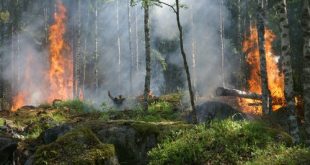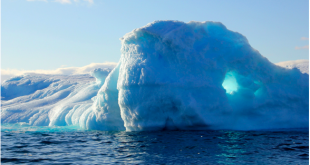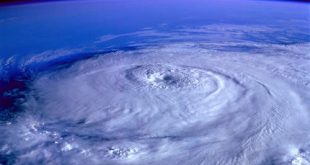by Nicole Chan
The first thing that comes to mind when most people hear “acid rain” is probably face-melting green radioactive goo falling from the sky, destroying everything in its path. While acid rain does destroy buildings, habitats and overall ecosystems, it is not radioactive. The one factor that sets acid rain apart from regular rain is its acidity, measured with a pH scale. The scale goes from one to fourteen, with one being very acidic and fourteen being very basic. Regular rainwater usually has a pH of 6, while acid rain has a pH of 5.0 – 5.5 (sometimes even below that) (Perlman). In this article, we will dive into the causes and effects of acid rain and how we can prevent it from happening.
Causes
Acid rain is defined as any form of precipitation with high levels of nitric and sulfuric acids. As nitrogen oxides and sulfur dioxide are released into the atmosphere by burning fossil fuels, they react with the oxygen and water to form nitric and sulfuric acids. Therefore, acid rain is the most common in areas with lots of factories and automobiles, mainly in the Northeastern states in America (Csanyi). Other than dealing damage during rainfall, acid rain is also absorbed into the soil and enters water systems.
Effects
There are multiple harmful effects that acid rain brings to the environment. First of all, the increased acidity is more likely to attract both dissolved and undissolved metal in the water system. This attraction forms precipitation, which is poisonous to crayfish, fish, clams and other creatures. A larger increase in acidity can also harm plant life as well, such as algae. One of the most acidic lakes is the Little Echo Pond in New York, with a reported pH of 4.2. Such a low pH is deadly for most marine animals, even bass, trout and mayflies (“Effect of Acid Rain on Lakes and Aquatic Systems.”). This disruption in the food chain causes serious damage to the overall ecosystem. If this continues, biodiversity will continue to decrease as precious species may become extinct due to human activity.
Other than environmental damages, acid rain also damages statues and buildings. The acidity dissolves structures made from substances containing calcium carbonate, such as limestone. This poses a threat to the art and culture that are preserved in the form of statues, as details from those artworks slowly erodes into amorphous blobs.
Solutions
Since acid rain is caused by released gases from fossil fuels, the most effective way to prevent acid rain is to conserve energy. This means that there will be less fuels that are burned and less toxic gases emitted. Also, people should choose to use public transportation, carpooling, and other alternatives to reduce emissions (Woodfall). This is also an efficient way to curb the amount of chemicals in the atmosphere. The government is also trying to solve this issue by cleaning industrial smokestacks. This method involves trapping toxic gases from leaving the smokestack and entering the atmosphere. Chemical reactions will be facilitated in order to reduce the amount of emissions.
It is important to understand the causes and effects of acid rain in order to fight against it. We need to work together to conserve energy and protect our planet’s invaluable water systems and our architecture.
Works Cited
Csanyi, Carolyn. “What Region of the United States Is Most Affected by Acid Rain?” Sciencing.com, Sciencing, 10 Jan. 2019, sciencing.com/united-states-affected-acid-rain-4965252.html.
“Effect of Acid Rain on Lakes and Aquatic Systems.” Effects on Materials, www2.gsu.edu/~mstnrhx/EnviroBio%20Projects/AcidRain/lakes.html.
Images, David Woodfall/Getty. “Acid Rain.” National Geographic, National Geographic, 19 Oct. 2017, www.nationalgeographic.com/environment/global-warming/acid-rain/.
Nguyen, David H. “How Does Acid Rain Affect Buildings & Statues?” Sciencing.com, Sciencing, 10 Jan. 2019, sciencing.com/acid-rain-affect-buildings-statues-22062.html.Perlman, Howard. “Acid Rain: Do You Need to Start Wearing a Rain Hat?” Adhesion and Cohesion Water Properties, USGS Water Science School, 12 Feb. 2018, water.usgs.gov/edu/acidrain.html.
 Tempus Magazine By Students, For Students
Tempus Magazine By Students, For Students 



